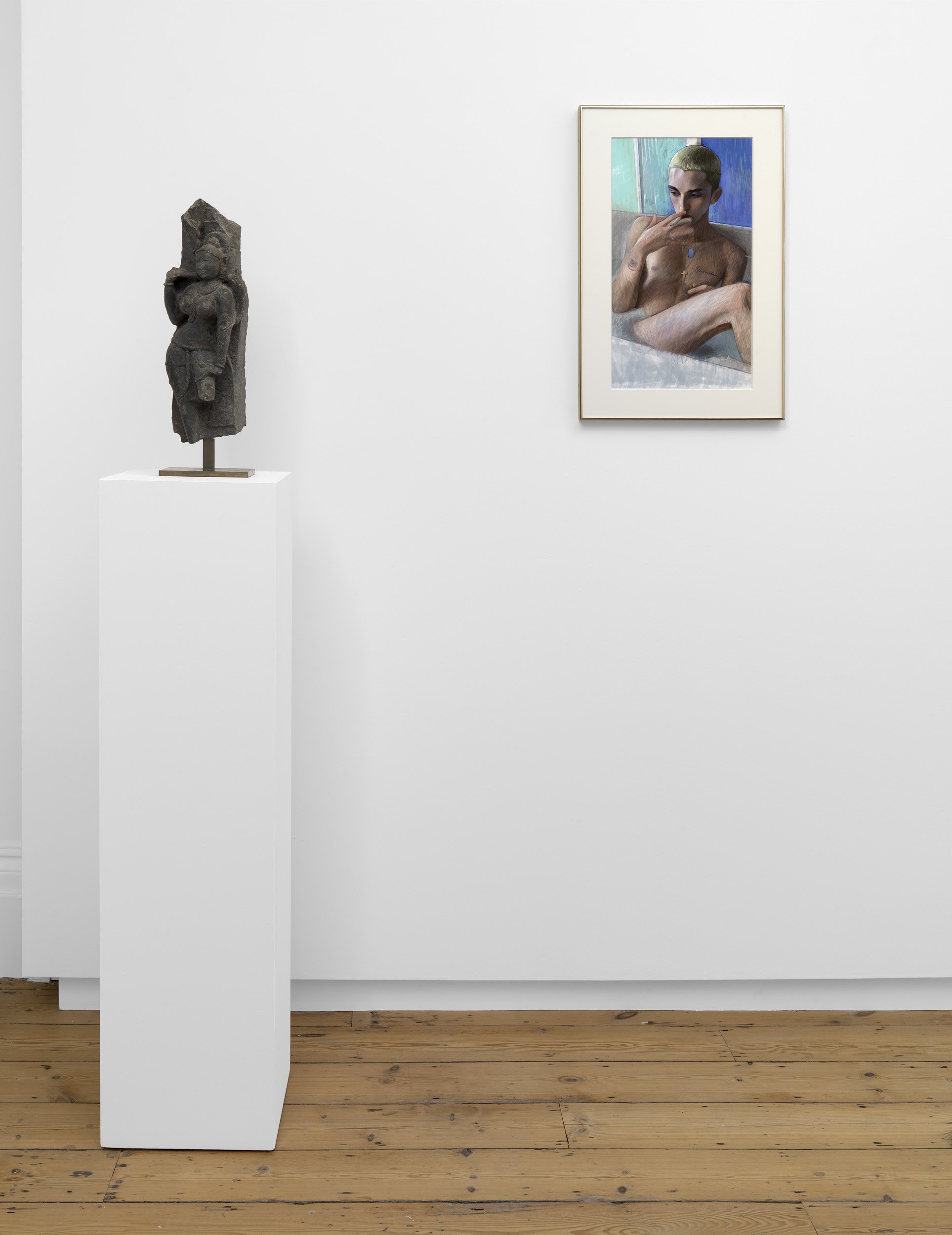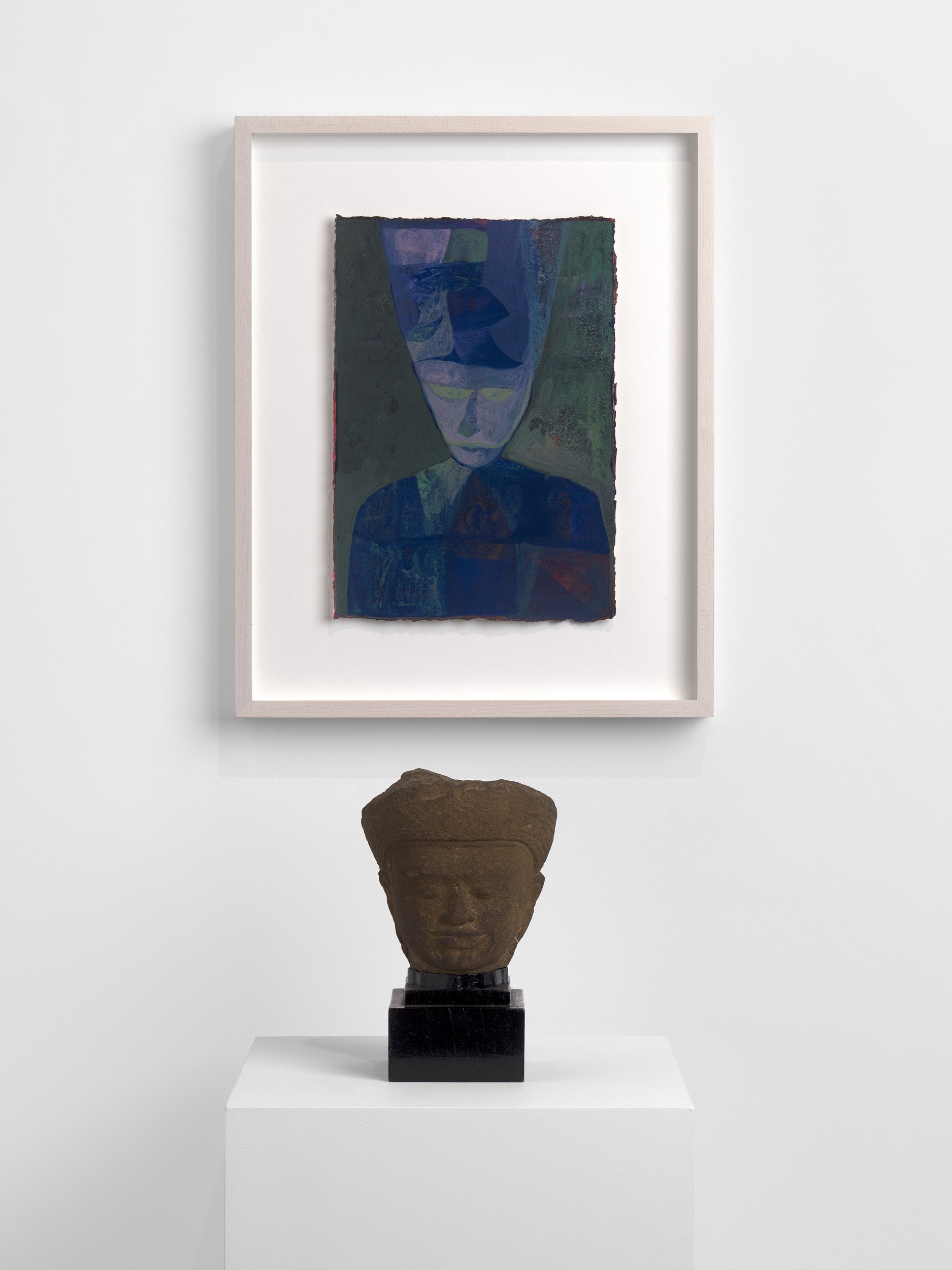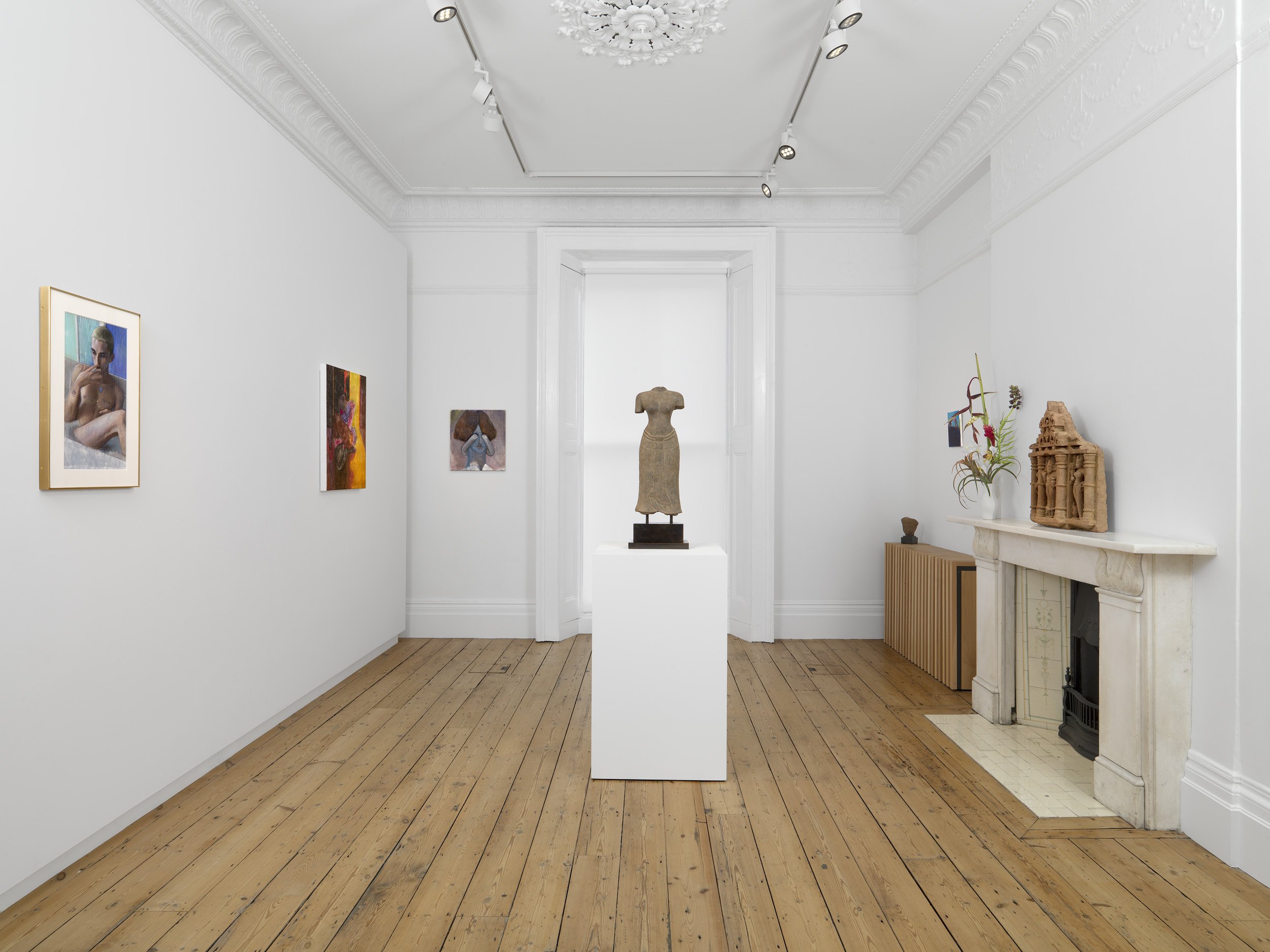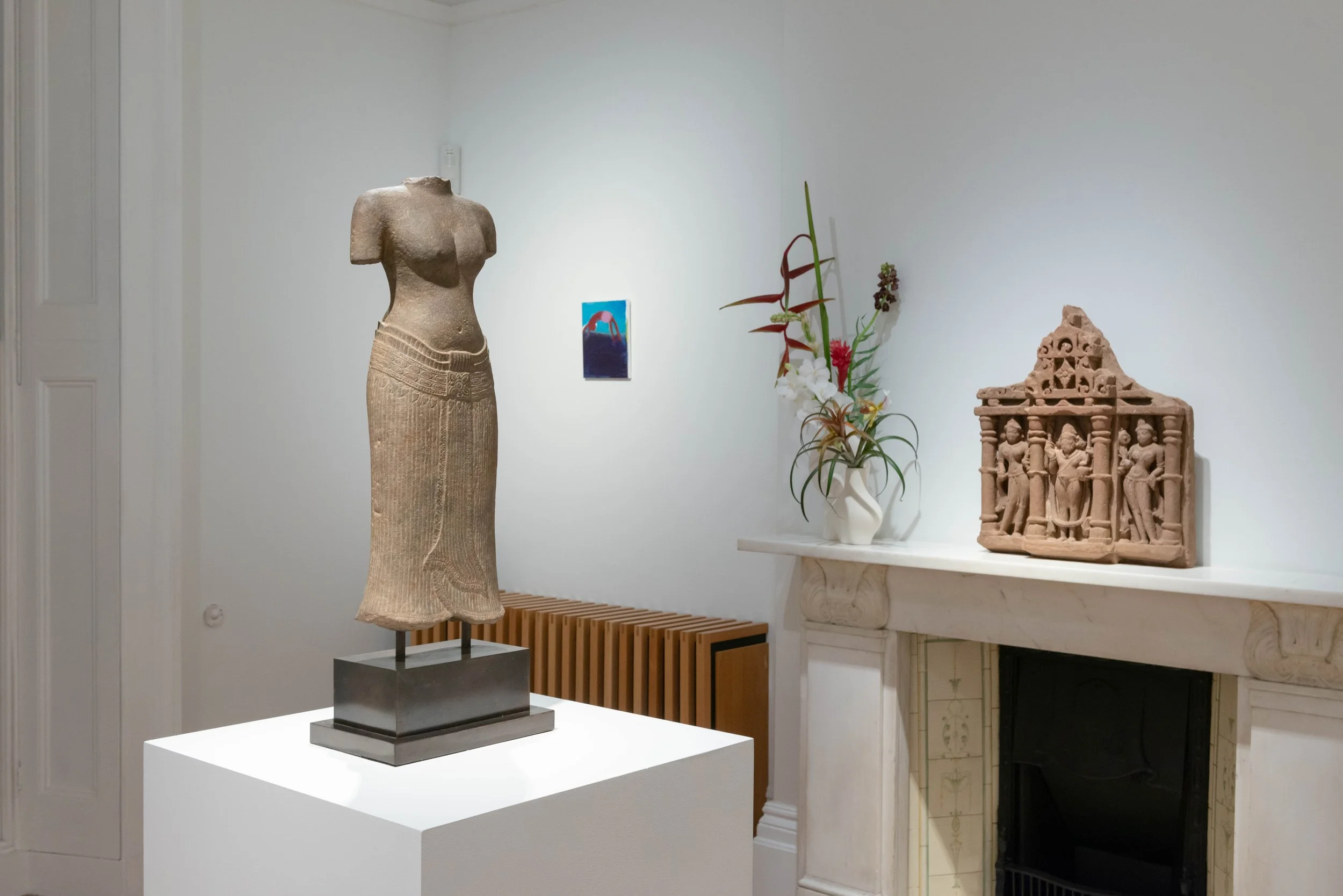
E N T R O P Y
Curated by Raja Umar Jamalullail and Hugo Alcantara
Miriam Cahn
Lee Lozano
Thomas Schütte
Tenki Hiramatsu
Chase Wilson
Anton Munar
Hotaru Tachi
Mimi Lauter
Isabelle Albuquerque
Paul Becker
28 May 2024 - 6 June 2024
11.00 AM - 6.00 PM, including weekends
4 Princelet Street, E1 6QH London, United Kingdom
Open to public
Entropy serves as a bridge in the artistic dialogue between antiquities and contemporary art, a concept that unites through contrast. Antiquities bear the weight of entropy, their erosion and wear a testament to history’s embrace. Contemporary art, meanwhile, often deliberately incorporates entropic elements, challenging the notion of permanence. Through ancient Asian sculpture and the works of Miriam Cahn, Lee Lozano, Thomas Schütte, Tenki Hiramatsu, Chase Wilson, Anton Munar, Hotaru Tachi, Mimi Lauter, Isabelle Albuquerque and Paul Becker, we explore the interplay reflecting the cycle of life and decay, creation and disintegration, where the old gives way to the new, and the new eventually becomes the old. Entropy, therefore, is not just a scientific principle but a philosophical muse, inspiring artists across eras to reflect on the transient nature of existence.

A pink sandstone temple fragment depicting dancing apsara richly draped in fine beaded jewellery. India, 10th-12th century CE.

v

A wooden figure of Ptah Sokar Osiris. Egypt, 664-332 BC.

A carved wooden head of Garuda. India, 18th-19th century AD.

A Gandharan schist frieze depicting a couple. Pakistan/ Afghanistan, 200-300 C.E.


A large and fine yellow sandstone figure of a four-armed crowned Vishnu. India, 10th-12th century AD.


1. Hotaru Tachi 面(つら), 2024, Oil on canvas, wood; 38.6 cm x 33.3 cm x 2.8 cm. 2. A pair of gilt wood Fu Dog temple figures. Edo Japan, late 18th century AD.

A carved wood figure of Fudo-Myo. Edo Japan, late 18th century CE.

A Gandharan grey schist relief panel depicting two putti supporting a leafy garland weighed down by a fruit. North-Western Pakistan, 300-400 C.E.

A large Javanese andesite figure of a Buddha. Indonesia, 9th century AD.

Anton Munar. Untitled, 2024. Oil on wood in artist textile frame. 27.1 cm x 37.2 cm x 2.4 cm.

1. Tenki Hiramatsu. Warm Air, 2024. Oil on canvas mounted on panel. 60 cm x 80 cm. 2. A Gandharan schist figure of a bodhisattva. Afghanistan/Pakistan, 100-400 AD.

A Khmer carved sandstone torso of a male deity in Bayon style. Cambodia, 12th-13th century AD.


A fine Sino-Tibetan gilt bronze figure of Vajrasattva with a benevolent expression holding a vajra and bell whilst seated on a lotus base. Qing Dynasty, 18th century C.E.

Miriam Cahn. denkender soldat, 5.1.19; 2019. Oil on canvas mounted on cardboard. 29.6 cm x 21.1 cm.

Louis Fratino. Self portrait with palette, 2018. Watercolour on paper. 30.5 cm x 23 cm.


Paul Becker. Boy, 2024. Coloured pencil on linen. 189 cm x 186 cm.

Hotaru Tachi. 転がる岩、君に朝が降 る, 2024. Oil and water-based paint and charcoal on linen, wood. 41.2 cm x 37.5 cm x 3.1 cm.

Chase Wilson. Shadow puppet (shoulder attachment), 2024. Oil, graphite and enamel on canvas. 162 cm x 91 cm.

A Khmer carved sandstone torso of a male deity in Bayon style. Cambodia, 12th-13th century AD.

Javanese shadow puppets. Malaysia, 19th-20th century AD)



Anton Munar. Untitled, 2023. Oil on wooden drawer. 24.3 cm x 11.2 cm x 7.5 cm.


Anton Munar. Untitled, 2024. Oil and collage on wood. 25.5 cm x 22.1 cm/

Sofya Shpurova. Untitled, 2023. Oil on canvas. 121 cm x 91 cm.

Thomas Schütte. Skatbruder Nr. 2, 2022. Patinated bronze. 20 cm (h).



Anton Munar. Untitled, 2023. Oil on wooden drawer. 24.3 cm x 11.2 cm x 7.5 cm.

Isabelle Albuquerque. The Golden Calf, 2022. Human hair, resin, Ebony gaboon. 25.4 cm x 68.6 cm x 8.6 cm.

1. Lee Lozano. Untitled, 1964. Pencil and coloured pencil on paper. 2. A sandstone carved figure of a yakshi. India, 10th-12th century CE.
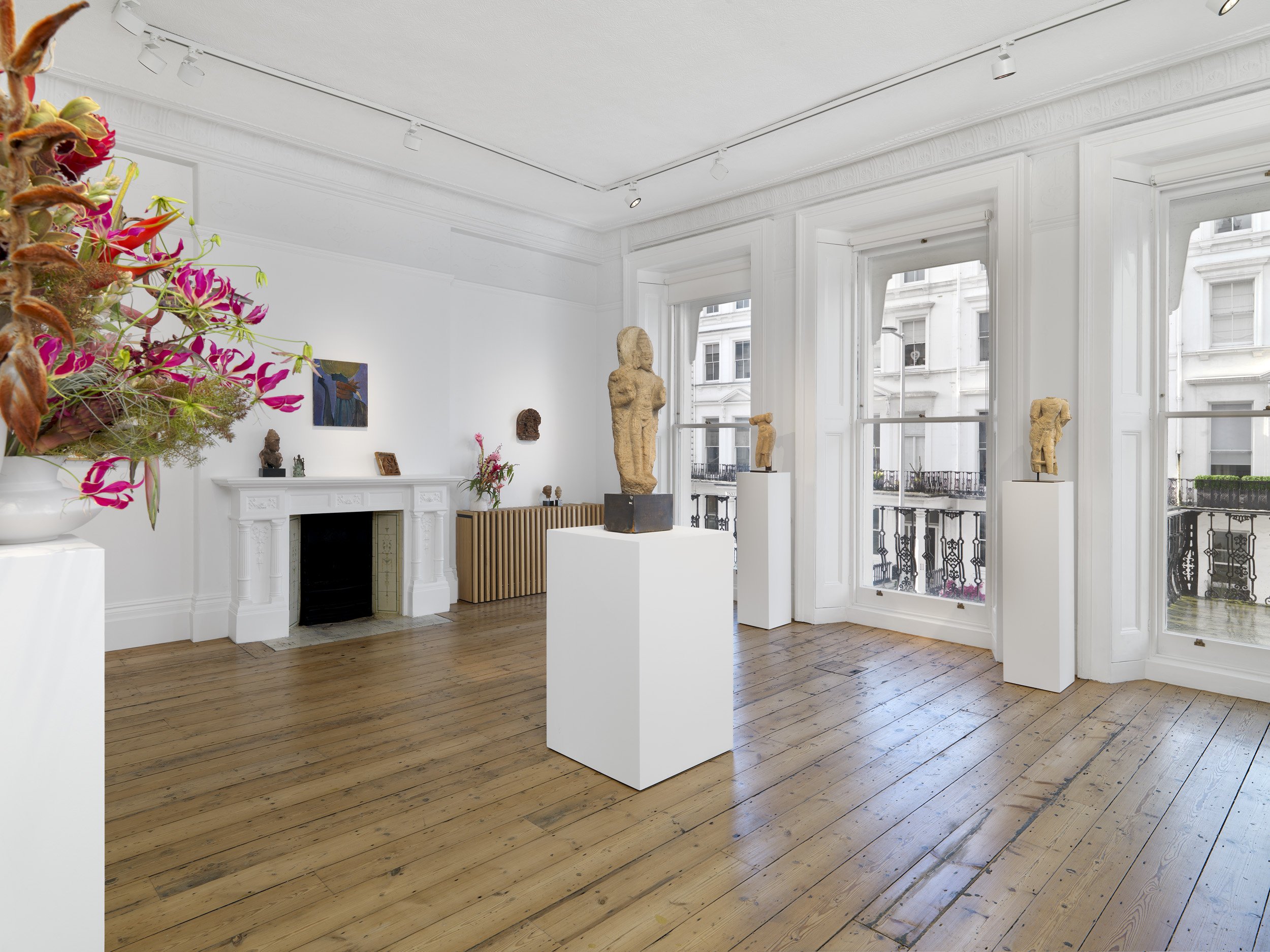
Deific Outlines: The Human Figure Throughout the Centuries and Regions
Curated by Raja Umar Jamalullail and Hugo Alcantara
27 February - 3 March 2024
11.00 am - 6.30 pm
Gallery 5, Cromwell Place, 4 Cromwell Pl, South Kensington, London SW7 2JE, United Kingdom.
Andy Warhol
Henri Matisse
George Condo
Katherine Bradford
Paul Becker
Henry Curchod
Xinyi Cheng
Maja Ruznic
Julien Nguyen
One of the oldest and most diverse forms of artistic expression, South Asian sculpture reflects the rich and complex history, culture, and spirituality of India and its neighbouring regions. Although the images of human figures differ from those found in western iconography, the preoccupations for depicting both the inner and outer life of its peoples are very much shared.
In contrast to the renaissance maxims of perspective and linear storytelling, South Asian art is more concerned with conveying complex narratives and multiple scenarios through a single image. For instance, ancient Hindu-Buddhist reliefs and paintings show the life and teachings of Buddha and other deities in a series of interconnected panels, each with its own focal point and perspective. This technique allows the viewer to explore the story from different angles and levels of detail, creating a sense of movement and continuity. The exhibition, however, delves into the individual characters depicted in the reliefs, by means of fragments allowing a more detailed study than would have been possible at the time of their creation.
The introspective and spiritual aspect of these stone sculptures is very much a shared aspect of most figurative artists. Although not a religious image, in Lydia au Chapeau Matisse projects a gaze that is reminiscent of some of the spiritual and transcendental qualities of the sculptures.
Similarly, Paul Becker shares a preoccupation with ancient sculptures, that of analysing the human-animal relationship. Although Paul’s work show a distinct power equilibrium to the confrontational quality of classical Indian temple tiles, the lyrical lines and poetic quality of the work is a shared concern of both artists.





